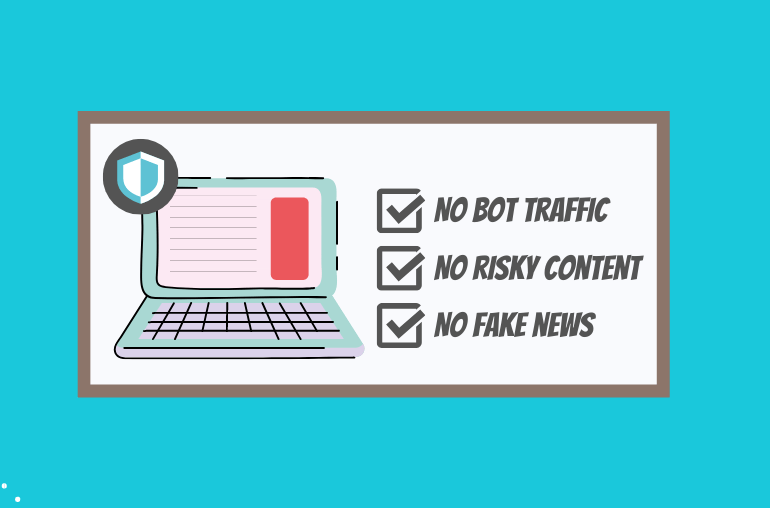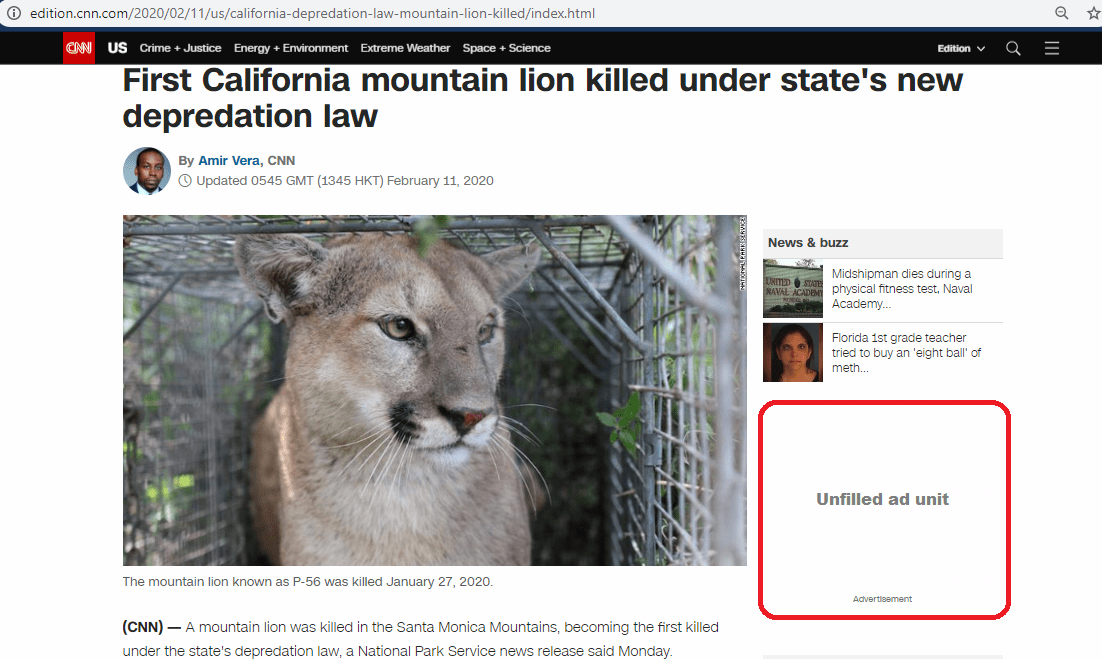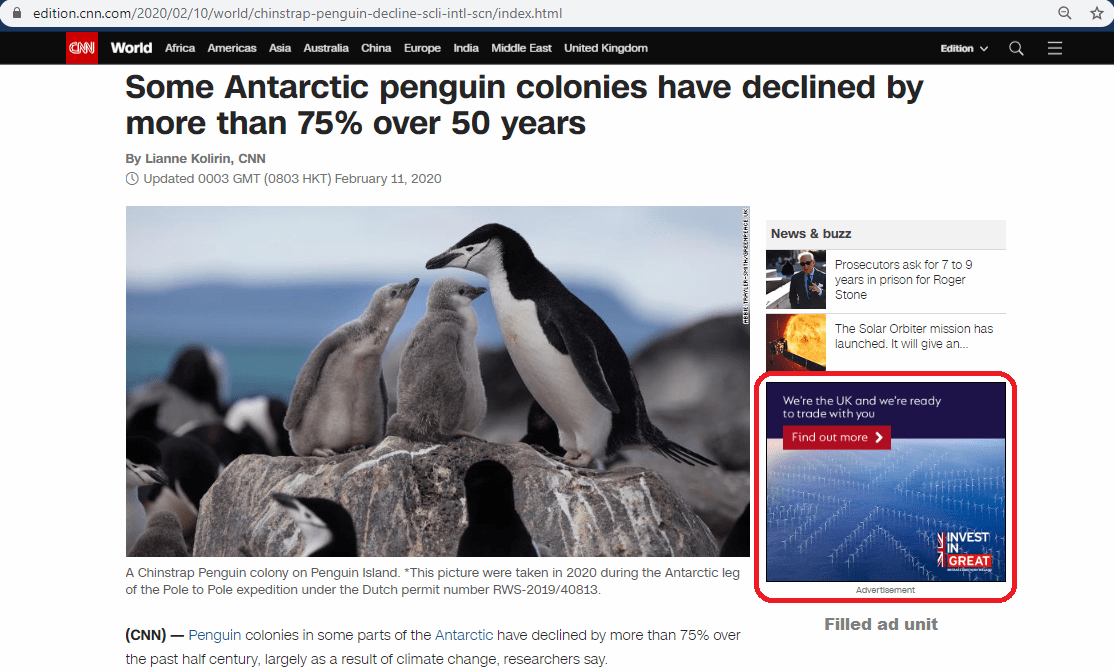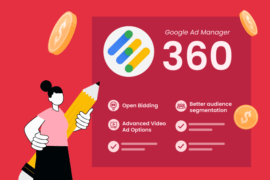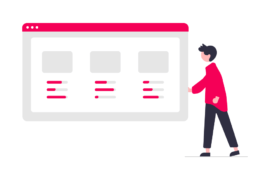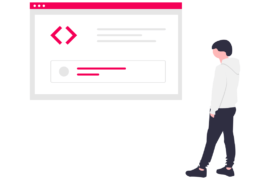Viewability and RoI are not the only metrics that brands consider when looking to buy ad inventory. They also think about their brand image when associating with publishers, more specifically, the type and quality of content they produce.
Advertisers want the most relevant users to see their campaigns, but never at the cost of appearing next to unsafe content. This is when brand safety comes into play.
What is Brand Safety?
Brand safety measures are designed to protect a brand’s online reputation by restricting it from associating with negative and inappropriate content.
Brand safety is in the eye of the beholder—it all depends on what is or is not appropriate for the brand. For example, an R-rated action film might have different standards than a baby products company.
— IAB Advertising Quality Measurement Buyer’s Guide
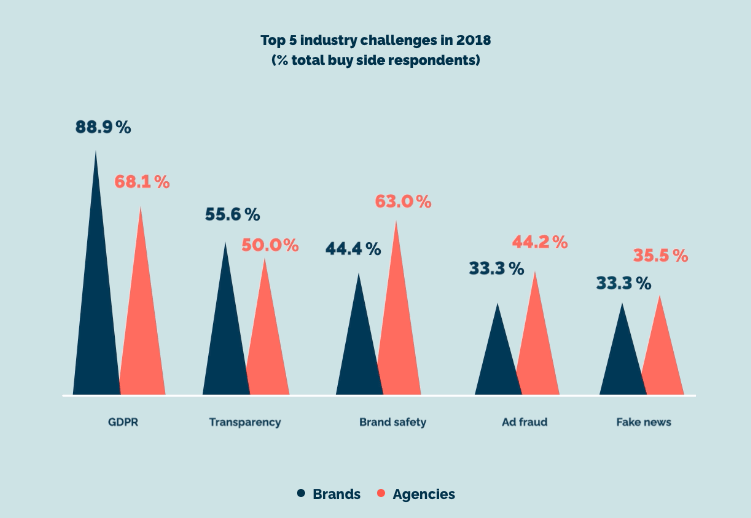
How’s this different from brand suitability?
It is not. Brand suitability is a marketing term, which means brands making decisions based on their needs and what’s right for them. It is one aspect of brand safety. Consider that you are a publisher in the finance niche. Your inventory is perfect for banks to show their ads. However, if stories related to banking malpractice start making the news, the same banks will avoid putting their ads on those articles.
Avoiding the entire website for advertising might potentially harm the advertiser’s campaign. This is where keyword blacklisting helps to filter out content with ‘risky’ news (we will discuss more about this later).
Who Decides What is “Safe” or “Unsafe”?
There are many organizations working towards defining brand safety measures. We have organizations like the Interactive Advertising Bureau (IAB) and Media Rating Council (MRC). These trade associations along with vendors who specialize in brand safety together define standards and best practices for publishers, advertisers, and agencies to follow, in order to maintain a healthy supply chain.
They provide the frameworks to ensure that the publisher’s inventory is viewable, follows privacy guidelines, and adheres to placement best practices. Similarly, for advertisers, they have authenticity of brand and restricted content for ads guidelines.
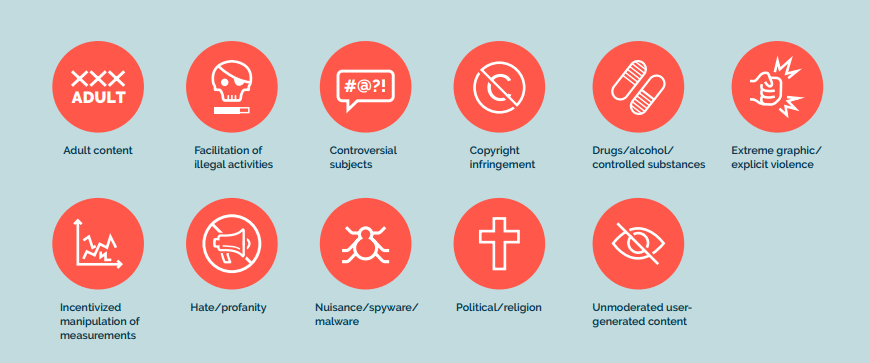
When it comes to individual brands, both publishers and advertisers are free to build their own brand safety measures on top of what’s provided by these organizations—and most do. For instance, a recipe website wouldn’t want ads of other recipe sites to appear on its pages. So, the publisher can add a filter to block these competitors.
Based on the adopted standards, advertisers often create and maintain a list of keywords that they would like to avoid while running their ad campaigns.
What Exactly Are We Trying to Avoid?
Things were simpler and ad revenue solely dependent on placement and viewability, back when contextual targeting was booming. If a content piece talks about shoes, all shoe brands would try to win a placement next to it.
But things changed when programmatic and behavioral targeting reduced advertise control over where the ads show up. In 2017, when a popular brand appeared next to an extremist YouTube video, ad tech started taking brand safety seriously.
A few years later, here is how advertisers are keeping their brands safe:
1. Avoiding invalid traffic
Invalid traffic is bad for many reasons. Starting from declining search engine performance, to ad fraud, and causing damage to reputed brands. Invalid traffic includes bot traffic. While some bot are good, like the ones used by Google, that help crawl and index your website, malicious bots are created to imitate human behavior, disrupt traffic stats, and in worst cases, even steal data from webpages.
Clearly, no advertiser would want to place their ads on a site that has loads of malicious bot traffic. The idea of getting your data stolen by unknown fraudsters made advertisers add this security check to their ad campaigns.
Google Analytics can help publishers detect bot traffic. And in the case of sophisticated invalid traffic, it is best to seek help from a fraud prevention provider.
2. Blacklisting keywords
It is a simple technique where the advertisers’ system stops the bid if the content page content risky keywords. It a convenient thing to do for advertisers, but often causes loss of revenue for publishers. Here is an example showing a news piece by CNN covering how a lion was killed because of a new state law. The page had no ads on it because the page used a blacklisted word: killed. However, another news about penguins with no such keywords have all placements filled with ads.
This is where things turn sour between the supply and demand side. Publishers want to be true to facts and advertisers want to protect their brands. For a long-term solution to this misalignment in goals, we need more sophisticated blacklisting techniques that understand context and doesn’t just blanket block keywords.
3. Choosing direct deals over programmatic
In order to avoid the complexity of programmatic, advertisers go with a safer solution—direct deals. This is in the benefit of publishers because direct deals often get better revenue than programmatic auctions for the same number of impressions.
However, publishers sell most of their inventory via programmatic. Also, only big brands can afford direct deals and small-to-medium ones stick to programmatic.
In the short term, direct deals might be a solution for most advertisers. But when it comes to brand safety, both direct deal and programmatic should be equally safe.
4. Creating a more transparent ecosystem
If advertisers know where their ads are appearing and how that content is not risky, even if it has a few blacklisted keywords, publishers will still be able to sell the impressions on the page. A transparent flow of supply chain not only protects against fraud but also creates better relationships amongst involved parties.
5. Defining brand safety measure for themselves
A survey by Digiday showed that most brands feel they are more responsible for their brand safety. Consequently, they try to craft their own solution to fight it.
This is when advertisers define their own guidelines for content they want to avoid. For instance, a banner of a movie wouldn’t appear next to a bad review of the same.
But if you post recurring negative content on your website, chances are that advertisers might blacklist it. Hence, it is recommended to keep information as honest as possible and add reliable sources to the data.
Why is Brand Safety Important for Publishers?
Most small and medium publishers aren’t aware of brand safety as a practice. Consequently, they miss out on ad monetization opportunities. And big publishers, like news and magazine sites are struggling to offer accurate information without using blacklisted keywords and losing on monetization opportunities.
Brand safety measures protect publishers from risks as well. The potential risks include illegal download ads, fraudulent e-commerce ads, and invalid traffic. All of which can decimate the publisher’s brand equity. Hence, correct understanding of brand safety is important for publishers to avoid leaving money on the table.
What Should Publishers Do?
- Know your current position: Apart from the use of blacklisted keywords, advertisers also consider the domain authority, viewability score, fill rate, and historical bid price of your site. If these numbers don’t match advertiser’s standards, you might be removed from the advertiser’s campaign. Hence, it is recommended to keep an eye on these numbers to avoid penalization by brand safety authorities.
- Stay away from invalid traffic: Non-human traffic can take down your brand safety score drastically. If a demand-side system notices unusual traffic on your domain, they will mark you unsafe for other buyers to see as well. Publishers can’t completely avoid invalid traffic. In such a case, be transparent and share the percentage invalid traffic you have on your site in your policy.
- Review your demand source: It is recommended to choose your demand partners wisely. Make sure they have appropriate safety mandates in place including prevention against ad injection fraud, domain spoofing, etc.
- Get help from brand safety companies: If you recently noticed a decline in fill rate and reason is not clear, chances are advertisers have blacklisted your inventory. Of course, there could be many other reasons. But don’t rule out blacklisting here. It is recommended to work directly with brand safety vendors. Along with their protection services, they can also provide the right consultation to create balance between genuine content and ad revenue.
- Learn more about it: Brand safety doesn’t just concern advertisers but also affects publishers of all sizes. Hence, learning more about the problem should help you craft an educated solution. Start with IAB and MRC guidelines and implement them to build confidence with buyers.

Shubham is a digital marketer with rich experience working in the advertisement technology industry. He has vast experience in the programmatic industry, driving business strategy and scaling functions including but not limited to growth and marketing, Operations, process optimization, and Sales.
